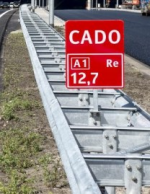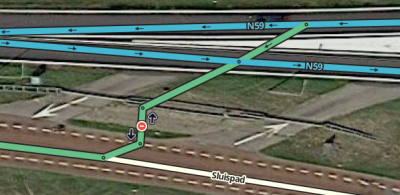k (Deeploz moved page Template:Development plans and priorities to Development plans and priorities without leaving a redirect: de-templatized to reduce complexity) |
(Updating to match new version of source page) |
||
| Regel 1: | Regel 1: | ||
{{TopLine}} | |||
==CADO== | |||
[[File:Cado-sign.png|right|150px]] | |||
In the Netherlands we have the phenomenon <i>CADO</i>, which stands for <i>Calamiteiten doorsteek </i>. | |||
Pass throughs that can be opened to emergency services. <br /> | |||
<br /> | |||
As a general rule: CADO's are not mapped. The exceptions that are mapped are protected by long lasting [[Closures|closures]].<br /> | |||
<br /> | |||
Some CADO's are mapped. These are mostly lanes that can be opened for the public in case of an accident blocking the regular road. An example on the N59, Ooltgensplaat. | |||
[[File:Cado-ooltgensplaat.png|400px|left|CADO Ooltgensplaat]] | |||
{{Clear}} | |||
< | __NOTOC__ | ||
{{Bottomline}} | |||
Versie van 30 jul 2018 13:11
CADO

In the Netherlands we have the phenomenon CADO, which stands for Calamiteiten doorsteek .
Pass throughs that can be opened to emergency services.
As a general rule: CADO's are not mapped. The exceptions that are mapped are protected by long lasting closures.
Some CADO's are mapped. These are mostly lanes that can be opened for the public in case of an accident blocking the regular road. An example on the N59, Ooltgensplaat.
